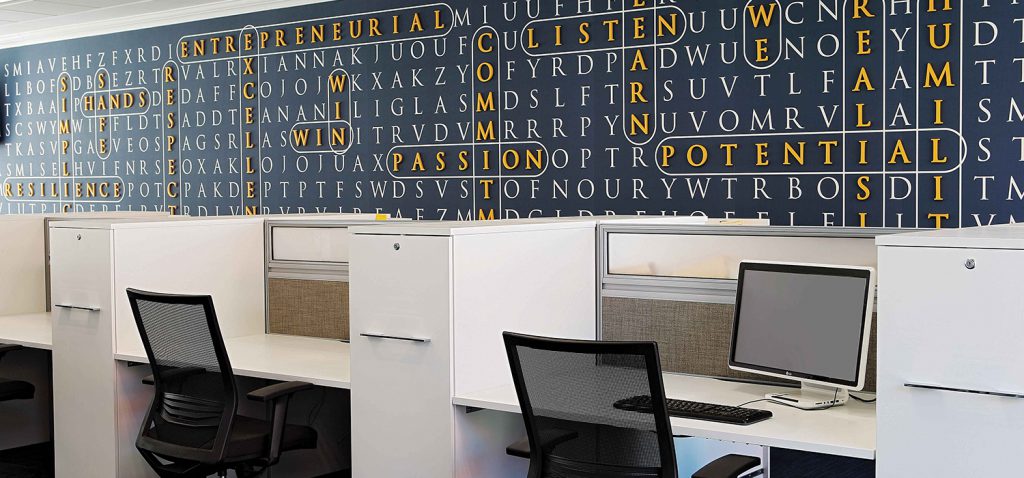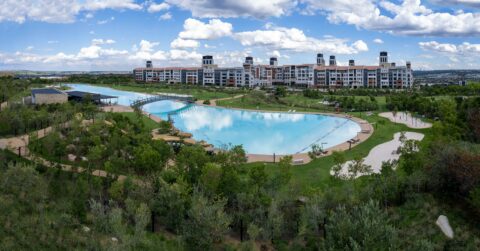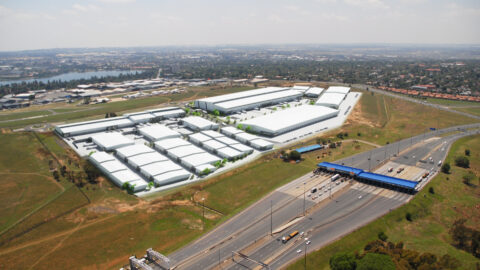Business Day Commercial Property
Flexible And Thoughtful Spaces
There have been a few articles shared recently on social media, all of which are different iterations of why the open-plan office concept has failed to achieve more physical collaboration, less slacking and an upbeat environment.
“The open office trap”, an article in The New Yorker magazine, noted that the open office was conceived by a team from Germany in the 1950s, hoping to facilitate communication and idea sharing. But, over the years, various research studies revealed that the opposite occurred, with employees finding the space disruptive and stressful, which made them resent their co-workers. In a world where privacy and space are valued, the open-plan office goes against this, and for those with short attention spans and a tendency towards sensory overload, the concept has spelt disaster.
Michael Harrison, a founding partner of Head Interiors based in Johannesburg, says that many South African companies are moving away from the “pure” open-plan office. This means that there are open working spaces, but with breakaway and private rooms. “People need quiet time and privacy for meetings. A range of meeting room sizes is ideal because if you do need privacy for a two-person meeting, for example, you don’t need to drown in a 16-seater boardroom,” says Harrison.
CELEBRATING CELLULAR SPACES
Tandi Jacobs, account manager at Black Sheep Design, agrees that the open-plan office environment is disruptive and that people are not as productive in that space. “But, open-plan offices make sense in a tough economic environment where people need to maximise floor space while minimising costs,” she says. “The trick is to have cellular spaces within the open office.”
Cellular spaces are the antithesis to an open-plan office in that doors and partitions divide the floor space, giving the worker their own office. But these cellular spaces don’t have to be dull office cubicles. Instead, says Jacobs, smaller pockets of space, like “telephone booths” are effective for privacy and usually include a phone and a place to plug in a laptop.
“Diner-style booths” are also effective for those needing quiet time, and because they can seat up to four people, can be used for a quick meeting if necessary. “A well-designed workplace offers alternate settings where house rules apply. For example, in an open-plan area, mobile devices should be switched to silent, and meetings in diner booths should have a time limit,” says Jacobs.
MEETING EMOTIONAL NEEDS
Khumo Theko, cultural identity trendspotter at Flux Trends, says that office spaces need to cater to a diverse range of emotional needs: many people have sensory processing issues and need a quiet space. “There’s a trend towards accommodating neurodiversity in public spaces, including offices. Neurodiverse spaces are designed to accommodate those who may have been sidelined or overlooked, such as those on the Asperger’s spectrum or with anxiety, various phobias, and so forth,” says Theko.
She cites the example of Google Design’s recent exhibition, A Space for Being, featured at the Milan Furniture Fair. “Google Design aimed to see how design can be calming, anxiety-provoking or happiness-inducing.”
Guests who visit the exhibition are given a wearable band while exploring the differently-designed rooms. People sit on furniture with different textures, experience varied lighting and inhale unusual scents. Meanwhile, the band is measuring physical responses such as heart rate speed and body temperature. Once the visitor has finished exploring the exhibition, they are given a report showing them which rooms made them calmer and which ones made them anxious.
“I think co-working spaces in South Africa are catering for a diverse range of people and scenarios really well. Generally, these office layouts give people the option to collaborate in an open space, or make a phone call in a quiet space, or decompress in a natural setting with lots of greenery and soft light,” Theko says.
Jacobs concurs that office design is focused on health and wellbeing. Some have yoga rooms and meditative areas. In addition, companies like Discovery have creches on site, which puts parents at ease, she says.
Itumeleng Makgakga, interior designer at HesseKleinloog studios, says that office interiors are now following the trend of an anti-office environment by designing areas that accommodate many activities and types of personalities. “The open floor plan is still prevalent, but there is now a focal coffee bar area and quiet spaces,” she says.
One of HesseKleinloog’s clients is a co-working space — The Business Exchange — in Sandton. Here, Makgakga focused on creating thoughtful spaces — from public to private, and celebratory spaces, such as a focal coffee area.
SHAKING UP THE OPEN PLAN TO THE AGILE PLAN
“There’s been a significant move in office design to accommodate the flexible or mobile worker,” says Harrison.
The concept of the hot desk was born — people didn’t have a dedicated working space where they could put pictures of their pets and their families on their desks, nor clutter their immediate surrounds with motivational quotes. “The trend has completely shaken up company culture. We have put standing tables in meeting rooms to ensure quicker and more effective meetings,” says Harrison.
Autodesk, a tech company based in Silicon Valley, has “treadmill” desks scattered around the office in a bid to keep employees active. This is because work days are long and opportunities for the required amount of exercise are scarce.
Makgakga says that some of her interiors include multiple standing desks, hot desks, collaborative meeting rooms, lounge-like comfortable pause areas and conference/event spaces. Examples of activity-based working office designs include the Workshop17 Firestation in Rosebank, Johannesburg, which has “multiple functioning spaces”.
The key to agile working lies in different spaces and settings. Agile space usually includes a focus space, a collaboration space, a team meeting space, a relaxation space, a telephone conversation space, a concentration space and an inspirational space.
The remote worker, Harrison notes, is taken into account in office design: video conferencing facilities, presentation technology and darkened rooms are important and part and parcel of most of his office interior designs.
Jacobs says that because employees are scattered across the country and globally, enabling skype, zoom calls and video conferencing in the office is a priority.
“I think flexible working spaces can facilitate fresh thinking and innovation — you can work in a breakaway space, or a collaborative area, or in a quiet zone. An individual may need to experience different settings during the day to be productive,” Harrison says.
DIFFERENT STROKES
Harrison admits that the agile office space or activity-based working space is not suitable for every company and that the move to hot-desking and standing workspaces should be managed well through a robust change management process. “Trends are all well and good, but it’s about what the employees and the management feel comfortable with. The worst thing that can happen is if people are not consulted about the change. It can be daunting and slightly discombobulating not to have your own workspace,” he says.
Head Interiors spends a significant amount of time with a client before implementing a design. “We spent six months in a law firm, surveying people’s needs and gathering information from time and motion studies. Our data showed, for example, that there weren’t enough smaller meeting rooms for two or three attendees, but a plethora of large ones. We work out a design based on real needs and it’s definitely not a one-size-fits-all,” Harrison says.






 Sign-up and receive the Business Media MAGS newsletter OR SA Mining newsletter straight to your inbox.
Sign-up and receive the Business Media MAGS newsletter OR SA Mining newsletter straight to your inbox.